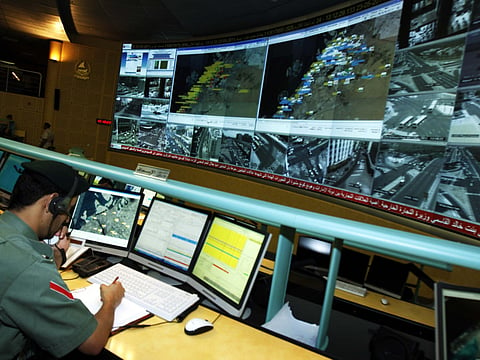How biometrics helped Dubai Police crack 2,290 cases
Investigations used faceprints, gait patterns, ear prints, handprints, body measurements

Dubai: Examining multiple forensic biometrics in physical and visual forensic evidence has remarkably aided Dubai Police’s investigators in 2,290 cases since 2017, the director of the General Department of Forensics and Criminology at Dubai Police has revealed.
According to Major General Ahmad Thani bin Ghalaita, the work of police personnel, including experts and specialists, is no longer limited to analysing evidence from crime scenes to search for and apprehend offenders.

Bin Ghalaita confirmed that Dubai Police forensic experts have successfully employed forensic biometrics to overcome challenges that avoided faceprints when identifying perpetrators wearing face masks during the outbreak of COVID-19.
“When combined with the artificial intelligence systems that we possess, forensic biometrics have proven their effectiveness and aided the experts in many cases in finding evidence that acquitted suspects and condemned others”, he explained.
International recognition
He confirmed that the Dubai Police General Command is a pioneer in applying multiple biometrics to analyse physical forensic evidence among police agencies in the world and has won the International Association of Police Chiefs IACP Award in 2020 for innovating the multi-model forensic biometrics technology, most notably the forensic gait analysis, that is a person’s pattern of movement.
Visual evidence analysis
Dr Lieutenant Colonel Hamad Mansoor Al Awar, Head of the Video and Image Evidence Examination Section at the Forensic e-Evidence Department, said their primary duty involves extracting electronic evidence from devices received from the concerned authorities. In other cases, which include visual film materials, they conduct analytical comparisons between the forensic biometrics seen in the graphic materials and those of suspects.
“We used to rely on a technology that analysed faceprints per specific measurements. However, when fingerprints or DNA traces were absent from crime scenes, this technology would become incapable of providing solid evidence when perpetrators hid their faces, wore masks, or were too far from the surveillance camera, or the crime scene had poor lighting,” he noted.
Five key biometrics
Dr Al Awar said they analyse visual materials for multiple forensic biometrics fingerprints, including faceprints, gait patterns, ear prints, handprints and body measurements, to aid investigators and ultimately serve the interest of the criminal justice system.
He revealed that analysing forensic gait analysis and body measurements have helped convict a man dressed in a women’s abaya (full-length outer garment worn by women) and niqab (face cover) to break into a flat and steal Dh12 million. “After analysing CCTV footage from the crime scene, our experts found the physical measurements and gait patterns in the recording were identical to the suspect’s,” he said.
In another case, Dr Al Awar said they managed to convict a suspect despite his attempt to conceal his facial features by matching his handprint, gait patterns, physical measurements, and ear print to the visual evidence collected from the crime scene CCTV.
Dr Al Awar confirmed that their technological advancement in analysing electronic forensic evidence prompted local and international police forces to seek Dubai Police’s expertise and assistance in comparing multiple forensic biometrics.
Sign up for the Daily Briefing
Get the latest news and updates straight to your inbox



